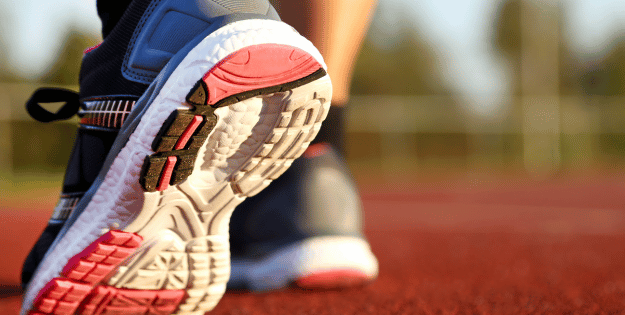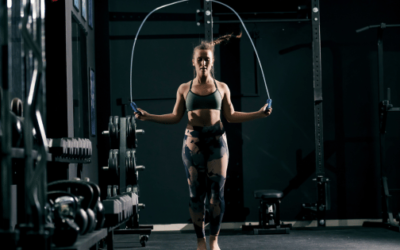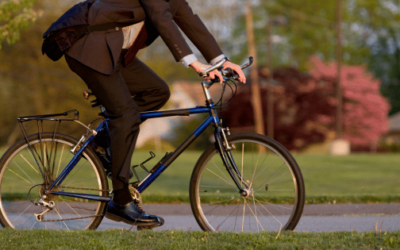Finding the perfect pair of running shoes can make all the difference in your performance and comfort. With countless options on the market, choosing the best running shoes can feel overwhelming. Whether you’re a seasoned marathoner or a casual jogger, the right footwear can help prevent injuries and enhance your running experience.
From cushioned soles to breathable fabrics, the best running shoes combine innovative technology with thoughtful design. This guide will explore top-rated models that cater to various needs, ensuring you find the ideal pair to match your running style and goals. Dive in to discover the best running shoes that will keep you moving forward with confidence.
Top Amazon Sellers
Key Takeaways
- Understand Your Foot Type: Knowing whether you have neutral, overpronated, or underpronated feet is essential in choosing the appropriate running shoe support.
- Cushioning and Heel-to-Toe Drop: These factors influence shock absorption and running mechanics, impacting overall comfort and performance.
- Categories of Running Shoes: Different types, such as daily trainers, racing shoes, stability running shoes, and super trainers, cater to specific running needs.
- Essential Shoe Features: Key features to consider include cushioning, support, flexibility, breathability, grip, and durability to enhance your running experience.
- Anatomical Differences: Men’s and women’s running shoes are designed differently to cater to unique anatomical and biomechanical needs, optimizing comfort and efficiency.
- Replacing Running Shoes: Monitor the wear and mileage of your running shoes, replace them every 300-500 miles, or when signs of wear become evident, to avoid injury.
How to Choose the Best Running Shoes
Identifying the right running shoes involves considering several crucial factors. Each aspect plays a significant role in enhancing performance and comfort.
Knowing Your Foot Type
Understanding your foot type—whether it’s neutral, overpronated, or underpronated—helps in selecting suitable support. Neutral feet benefit from versatile shoes while overpronators need stability and underpronators prefer cushioning.
The Role of Cushioning
Cushioning impacts shock absorption and comfort. Runners covering long distances require more cushioning to reduce impact, whereas those seeking speed might opt for minimal cushioning for a lighter feel.
Importance of Heel-to-Toe Drop
Heel-to-toe drop affects running mechanics. Higher drops, ranging 8-12 millimetres, provide better heel strike cushioning. Lower drops, typically 0-6 millimetres, promote a forefoot or midfoot strike and can help improve overall running efficiency.
Getting the Right Fit
Fit is crucial for avoiding discomfort and injuries. Running shoes should have a thumb’s width space between the toes and the shoe’s end. They should also feel snug in the midfoot and heel, which prevents slipping and blisters.
Categories of Running Shoes
Choosing the best running shoes depends on understanding the different categories available. Each type serves a specific purpose to enhance the running experience.
Daily Trainers
Daily trainers provide durability and comfort for regular runs. They offer a balanced mix of cushioning and support. Designed for consistent use, these shoes cater to various distances, making them versatile choices for both short jogs and long runs.
Racing Shoes
Racing shoes are lightweight and designed for speed. They feature minimal cushioning to reduce weight and enhance performance. Ideal for competitive running, these shoes help runners achieve maximum speed and efficiency during races.
Stability Running Shoes
Stability running shoes offer extra support for runners with overpronation. They have built-in features to correct foot alignment and prevent injuries. Suitable for those who require additional structure, these shoes combine cushioning with enhanced stability.
Super Trainers
Super trainers deliver high-performance cushioning and support for intense training sessions. These shoes incorporate advanced technology to improve running efficiency and comfort. Perfect for tackling demanding workouts, they blend robustness with responsive cushioning.
Key Features to Consider
Selecting the best running shoes means focusing on several essential features to ensure maximum performance and comfort.
Cushioning
Cushioning impacts shock absorption and long-term foot health. Look for shoes that provide the right level of cushioning, balancing comfort and performance based on running habits.
Support and Stability
Support and stability are key for maintaining proper foot alignment. Choose shoes with features designed to enhance stability, especially for overpronators or those requiring extra support.
Flexibility and Breathability
Flexibility allows for a natural foot strike, improving overall efficiency. Breathable materials keep feet cool and dry, enhancing comfort during runs, especially over longer distances.
Grip and Durability
Grip ensures traction on various surfaces; durability extends the shoe’s life. Opt for shoes with robust outsoles that provide excellent grip and are resilient for prolonged use.
Benefits of Different Foam Materials
Running shoes utilise various foam materials to enhance performance and comfort. Understanding the benefits of these materials helps in selecting the best running shoes.
Premium Foams
Premium foams offer superior cushioning and energy return, enhancing running efficiency. They are often lightweight and durable, providing long-term comfort and performance for avid runners. Advanced technologies in these foams ensure enhanced shock absorption, critical for marathon and long-distance runners.
Standard Foams
Standard foams provide dependable cushioning and support. They offer a balance between comfort and stability, making them suitable for everyday training. Although less advanced than premium foams, they still deliver adequate shock absorption, improving overall running comfort and reducing injury risks.
Men’s vs. Women’s Running Shoes
Men’s and women’s running shoes differ in several key aspects to accommodate anatomical variations and specific needs, enhancing running efficiency.
Anatomical Differences
Anatomical differences between men’s and women’s feet influence shoe design. Men’s running shoes typically provide more width and volume to accommodate broader feet, while women’s models often feature a narrower heel and deeper arch to support a different foot structure.
Do You Need Gender-Specific Shoes?
Gender-specific running shoes can offer better comfort and performance. It’s beneficial to select shoes designed for your gender, given they cater to anatomical differences and running mechanics, promoting optimal fit and reducing the risk of injuries.
Best Running Shoes for Different Needs
Selecting the best running shoes depends on individual requirements. Different running conditions and goals call for specific features to ensure optimal performance and comfort.
Best for Long-Distance Running
Long-distance running shoes offer substantial cushioning, reducing impact and providing long-term comfort. These shoes enhance shock absorption and foot health for marathon runners seeking durability and support.
Best for Speed and Performance
Speed and performance shoes focus on lightweight design and minimal cushioning. These features enable faster movement and improved running efficiency, ideal for short-distance runners and competitive athletes.
Best Value for Money
Value-for-money running shoes balance cost and quality. They provide essential features like adequate cushioning, support, and durability, making them suitable for everyday training without breaking the bank.
Best for Trail Running
Trail running shoes feature robust grip and enhanced durability to tackle uneven terrains. They offer improved traction and stability, ensuring runners stay secure and comfortable on off-road trails.
When to Replace Your Running Shoes
Running shoes eventually lose their effectiveness, risking potential injuries. Generally, a pair can last between 300 and 500 miles. For someone running 20 miles a week, this translates to replacing them every four to six months.
Visible signs of wear include worn-out soles, reduced cushioning, and poor heel support. If the tread pattern wears thin, it’s time to consider new shoes. Another indicator is discomfort or pain during runs, especially in areas like the knees, hips, or lower back.
Keep a log of mileage, either with a running app or manually, to track shoe usage accurately. Regularly inspect shoes for wear, ensuring they continue to provide the necessary support and cushioning. Factors like running style, terrain, and body weight also influence how quickly shoes wear out.
Conclusion and Top Picks
Choosing the right running shoes is crucial for enhancing performance and preventing injuries. By understanding foot type, cushioning needs and heel-to-toe drop, runners can find the perfect fit. Daily trainers, racing shoes, stability shoes and super trainers each offer unique benefits tailored to specific running styles.
Key features like support, flexibility, breathability and grip should be considered to ensure comfort and durability. Premium and standard foams provide varying levels of cushioning and energy return, catering to different running demands. Gender-specific designs further enhance fit and performance.
Regularly replacing running shoes is essential to maintain effectiveness and prevent discomfort. By following these guidelines, runners can optimise their footwear choices and enjoy a more comfortable and efficient running experience.
Frequently Asked Questions
Why is it important to find the right pair of running shoes?
Choosing the right running shoes ensures optimal performance and comfort and helps prevent injuries. The correct footwear can enhance the running experience for both seasoned athletes and casual joggers.
How do I determine my foot type?
You can determine your foot type by checking your arch height or getting a gait analysis. The three main foot types are neutral, overpronated, and underpronated, each requiring different levels of support.
What is the importance of cushioning in running shoes?
Cushioning is crucial for shock absorption and comfort. Long-distance runners benefit from more cushioning to reduce impact, while speed-focused runners may prefer minimal cushioning for better ground feel and performance.
What does heel-to-toe drop mean, and why does it matter?
The heel-to-toe drop is the difference in height between a shoe’s heel and forefoot. A higher drop provides better heel strike cushioning, while a lower drop promotes efficient forefoot or midfoot strikes, affecting running mechanics.
How should running shoes fit properly?
Running shoes should have a thumb’s width of space between your toes and the shoe’s end. They should fit snugly in the midfoot and heel to prevent discomfort and injuries.
What are daily trainers?
Daily trainers are versatile running shoes known for their durability and comfort, suitable for various distances and regular use.
What are racing shoes designed for?
Racing shoes are lightweight with minimal cushioning to optimise performance during competitions and speed-focused runs.
Why are stability running shoes important?
Stability running shoes provide extra support for overpronators, helping correct foot alignment and preventing related injuries.
What should I consider when choosing running shoes?
Consider cushioning for shock absorption, support for foot alignment, flexibility for a natural foot strike, breathability for comfort, grip for traction, and durability for longevity.
When should I replace my running shoes?
Replace running shoes every 300 to 500 miles, typically every four to six months for regular runners. Signs of wear, reduced cushioning, and discomfort during runs indicate it’s time for new shoes.
What are the benefits of premium foam in running shoes?
Premium foams offer superior cushioning and energy return, enhancing running efficiency and comfort, especially for long-distance runners.
Do men’s and women’s running shoes differ?
Yes, men’s shoes generally offer more width and volume, while women’s shoes have a narrower heel and deeper arch, catering to anatomical differences for optimal fit and performance.












